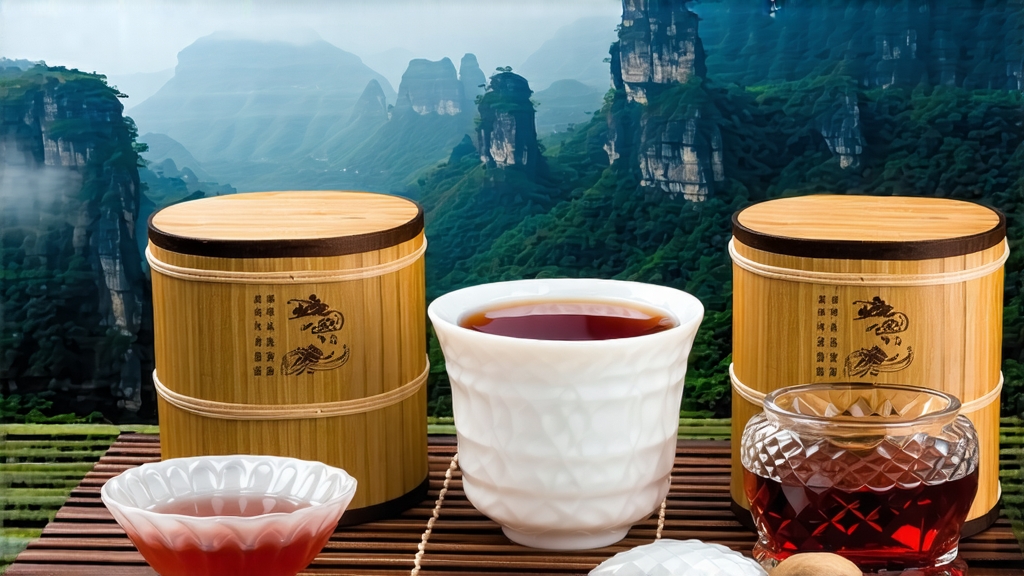
If every tea has a passport, Lapsang Souchong’s is stamped with the soot of pine needles and the salt spray of the South China Sea. Born in the precipitous Wuyi Mountains of northern Fujian, this rugged black tea was the first to leave China in bulk, sailing on Dutch East India ships in 1604 and teaching Europe what “black” tea could taste like. Today the name is tossed around loosely, yet authentic Zheng Shan Xiao Zhong—the original Lapsang—remains a guarded secret of Tongmu Village, a protected enclave where motor traffic is banned to preserve the fragile pine-and-bamboo ecosystem that gives the tea its soul.
History: From Bandits to Boston
Local lore claims the smoke style was an accident: Qing-era soldiers requisitioned tea warehouses, forcing farmers to dry leaf hurriedly over open pine fires so they could sell it before the army returned. Whatever the truth, the tarry fragrance bewitched London merchants, who christened it “Bohea” (from the Min-dialect “Wuyi”) and made it the cornerstone of the notorious Boston Tea Party crates. By the mid-1800s Tongmu produced only a few hundred chests yearly, yet those chests commanded twice the price of any other black tea, laying the financial groundwork for the great tea gardens of India and Ceylon.
Micro-terroir: A Volcanic Hideaway
Tongmu sits in a granite fault at 27° N, shrouded 260 days a year by cloud. Day-night swings of 15 °C slow leaf growth, concentrating amino acids, while the resinous Masson pine (Pinus massoniana) infuses the air with turpene-rich vapors. Only leaf picked within this 600–1 200 m corridor may legally bear “Zheng Shan” (“original mountain”), a status enshrined by China’s National Geographic Indication in 2002.
Two Faces of the Same Leaf
- Traditional Pine-Smoked Lapsang: After withering on bamboo racks above gentle pinewood fires, the leaves are rolled, oxidized 80 %, then baked in wooden chambers whose floors are heated by burning pine logs. For the final “Hong Qing” the tea is moved to upper lofts where fresh pine needles smolder beneath; resin penetrates the leaf for 8–10 hours, creating the signature campfire nose and longan-sweet finish.
- Unsmoked “Wild” Lapsang: A 21st-century response to foreign palates, this version skips smoke entirely. Instead, leaf from old-growth bushes is withered naturally in shaded corridors, oxidized slowly at 24 °C, then charcoal-baked at 60 °C for six hours. The cup is silky, honeyed, with hints of dried longan and Wuyi mineral—closer to a Burgundy Pinot than to lapsang of Victorian legend.
Craftsmanship: A Timeline of Fire and Flesh
A single kilo demands 55 000 buds plucked at dawn before the mountain thermals rise. The leaves must reach the village workshop within two hours; any delay and the enzymatic profile drifts. Withering over pine embers lasts 6–8 hours—three times longer than conventional black tea—because the smoke desiccates the surface while locking moisture inside. Rolling is still done by foot on split bamboo, the operator’s weight calibrated to crack cell walls without pulverizing them. Oxidation proceeds in cedar-lined boxes tucked inside quilted blankets; every 20 minutes the tea is fluffed by hand to oxygenate the pile evenly. Finally comes the “pine pull”: the master decides how much smoke the leaf will accept by listening—when the crackle of needles softens to a whisper, the tea has drunk enough fire.
Grades & Nomenclature
- Pekoe Tip (PT): highest proportion of golden buds, light smoke, cocoa liqueur.
- Special Chunk (SC): larger broken leaf, tarry nose, malt and molasses.
- Charcoal Style (CS): re-roasted over bamboo charcoal six weeks after smoking, deepening sweetness and stabilizing the aroma for decades.
- Aged Lapsang: stored in clay jars breathing through pine-ash plaster; after five years the smoke recedes, revealing notes of pipe tobacco, prune and wet slate.
Brewing: Gongfu versus Teapot
Gongfu (preferred): 5 g leaf,